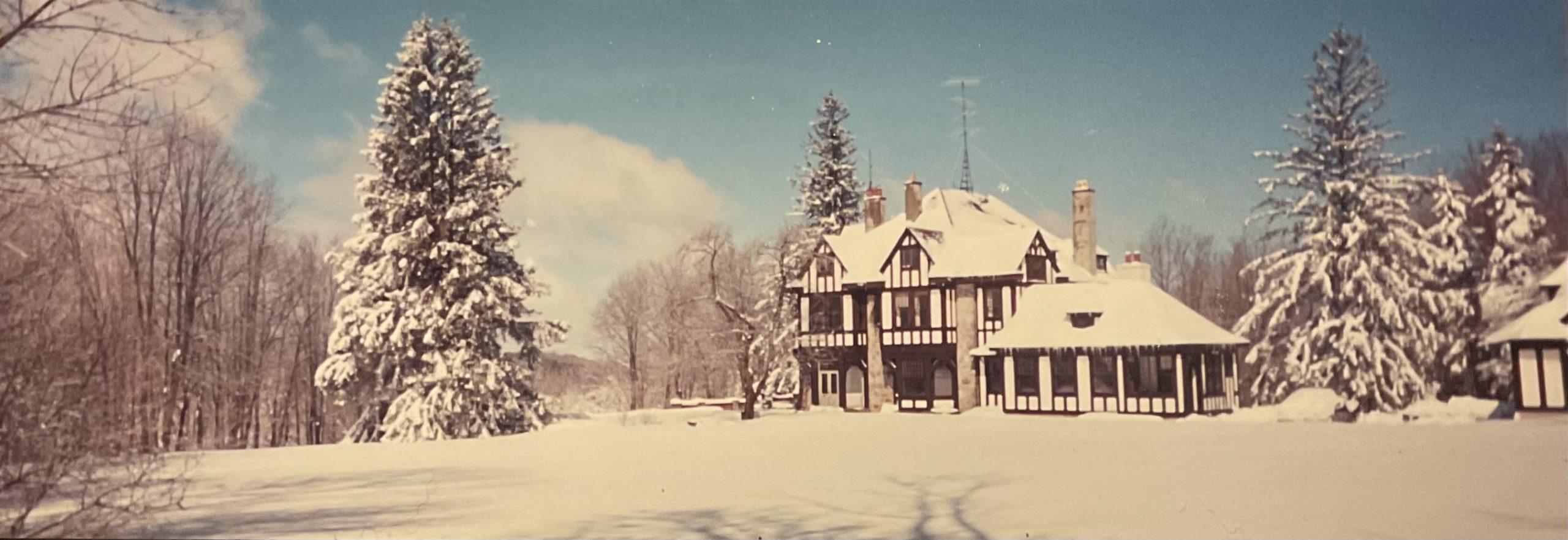On the Ron Maxwell Interview: Personal Reflections
Ed Timberlake and Robbin Laird’s interview with Ronald “Ron” F. Maxwell on the monumental 1993 film “Gettysburg,” which he directed and wrote the screenplay, provoked some interesting memories.
I was very interested to learn for instance from the Robbin Laird and Ed Timberlake interview that Ron Maxwell had performed in a school play as Hamlet. And that his success in this role had led him to the NYU Film School.
I also happened to have played Hamlet at my school, Queen’s College, Taunton, Somerset in the UK in 1958. My teacher and the play’s producer, Brian Watkins, very much wanted me to continue in the theatre. I did go up to London at his insistence and was auditioned by the National Youth Theatre and was invited to join the company.
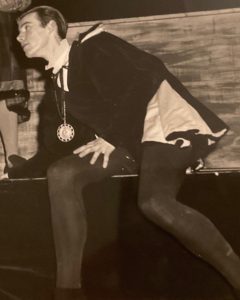
I had already, however, been offered a place at St. John’s College, Cambridge, by Harry Hinsley, the historian (and former Bletchley Park code breaker, although we did not know about Hinsley’s war-time intelligence activity until many years later because of the strictures of the Official Secrets Act.) So in 1960 instead of going into the theatre I went up to Cambridge University much to Brian Watkin’s disappointment.
I had intended to go on acting while at Cambridge and did attend the open audition for the Cambridge Dramatic Society in my first week. The auditions were being conducted by Corin Redgrave, one of the less talented members of that very talented theatre family. He was conducting the auditions seated on a very large throne in the middle of the stage I decide that this was not for me and left before my turn came.
But I do have another non-shakespearian connection to Ron Maxwell’s Gettysburg.
My house “Moss Hill” in Norfolk in northwestern Connecticut, where I lived until 2004, was constructed in 1903 for Major John Barclay Fassett. Major Fassett was a hero of the battle of Gettysburg. The house was designed by the architect, Alfredo Samuel Guido Taylor, who had arrived in Norfolk in 1902. He was to play a major role in the “village beautiful” movement in New England. Norfolk’s leading family’s, the Battells and the Eldridges, had pioneered the movement.
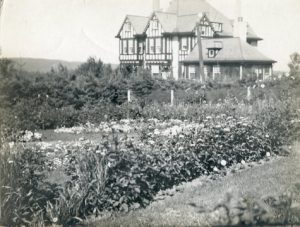
Like many of New England’s small towns in the 19th century, Norfolk had lost its economic base in agriculture and mill production. Yet Norfolk with its picturesque scenery, pure air, and mountain spring water, and at the time a very good railway connection, was among the towns in the Berkshires and Litchfield Hills which were reborn as summer resorts.
Alfredo Taylor was born in Florence, Italy, in 1872. He had graduated from Harvard, studied at Columbia University’s School of Architecture, and in Paris at the Ecole des Beaux-Arts, returning to New York City in 1900. In the Fall of 1902 he purchased a parcel of land in Norfolk adjacent to the property recently acquired by his wife’s mother and stepfather, Major John B. Fassett, who were planning to build a summer residence there.
The Fassett house, known as “Moss Hill” was Alfredo Taylor’s first Norfolk project. Taylor’s own house “Rubly” was built adjacent to “Moss Hill” and was ready for occupation in 1905. It was empty and in total disrepair when we checked it out in the mid-1990’s but has since been refurbished.

Many of Major Fassett’s books and personal belongings were in the attic, forgotten for decades, and they were still there when we moved into Moss Hill.
It took me three years to sort them all out. Major Fassett had been a member of the Harvard class of 1858. Among his fellow students was Henry Adams, later the historian and the author of “The Education of Henry Adams” an American classic.
The first edition of the book was in the attic at “Moss Hill.”
Another of the students in his class was William Henry Fitzhugh Lee, the son of general Robert E Lee, later to be the commander of the confederate forces at Gettysburg.
Major Fassett had to wait for the congressional medal of honor for his heroic action at Gettysburg until December 1894. The congressional medal of honor, the highest decoration for bravery in the United States, had been conceived originally as a decoration for ordinary soldiers not for officers. It was only in the end of the decade of the 1880s that the decoration was extended to officers as well.
During the civil war, the young Fassett, born in Philadelphia, had enlisted in the 23rd Pennsylvania Infantry. On July 2, 1863, Captain Fassett was serving as the senior aide to Major-General David B. Barney, who commanded the Army of the Potomac’s 1st Division of the III Corps. When the confederates under General James Longstreet smashed the III Corps salient near the Peach Orchard, he rallied and reformed elements of General Andrew Humphry’s 2nd Division on Cemetery Ridge.
Returning to the front lines he noticed the abandoned and captured artillery pieces of battery 1, 5th US Regular Artillery. Realizing that the confederates could use the guns to destroy the newly reformed Union positions on Cemetery Ridge, he ordered the nearest troops, the 39th New York Volunteer Regiment of the II Corps, to charge and retake the guns. The unit commander initially refused but Fassett invoked the authority of General Winfield S. Hancock (which he did not technically have).
He then joined the vicious struggle to retake the guns. He made a conspicuous target as he was the only mounted officer.
The New York 39th succeeded in retaking the guns and Captain Fassett made a daring escape as the confederates tried to knock him off his horse and capture him. His actions secured the safely of of the Cemetery Ridge front line.
Major Fassett died in January 1905 so he did not live to enjoy his new summer residence in Norfolk. His wife, Taylor’s mother-in-law, soon married again, to a Mr. Purdy, a wealthy businessman with financial interests in the railroads and engineering plants in pre-revolutionary Russia.
His papers were also in the attic at Moss Hill and I donated them to the Norfolk Historical Society.
Major Fassett was present when Abraham Lincoln gave his famous address at Gettysburg on November 19th, 1863, four and a half months after the battle. The Secretary of War’s very long speech preceded the very short speech of Lincoln which is published on one page at the end of the official printing of the proceedings that day.
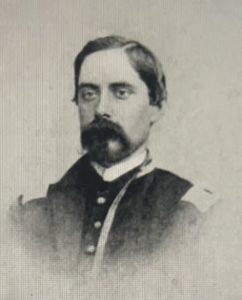
I have donated these proceedings, found in the attic at Moss Hill, as part of my collection at the library of St John’s College, Cambridge, as well as Major Fassett’s information, also retrieved from the attic, concerning the congressional medal of honor.
The permanent residents of Norfolk Connecticut today number only 1,500 people, a little less than the number of residents a hundred years ago. On the village green at Norfolk, Connecticut, there are the names of the 35 local men on the memorial to those who died during the “war of the rebellion.” Norfolk’s veterans gather there in silence each Memorial Day, not only to remember those who died during the American Civil War, but of all the wars since where Americans have died.
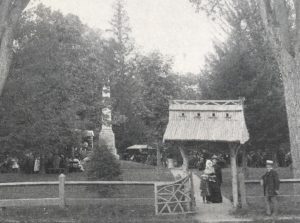
The Union commander at Gettysburg was General George Meade. General Grant was besieging Vicksburg, Mississippi, at the time. But I have Major Fassett’s lithograph of “General U.S. Grant” retrieved from the attic of his house at Moss Hill hanging on my study wall.
It is of course a pure (and happy) coincidence that I share a family name as well as the Gettysburg medal of honor winner Major Fassett’s attic at Moss Hill with Ron Maxwell.
Featured Photo: Moss Hill in Winter.
A Conversation with Ron Maxwell: The 30th Anniversary of the Epoch Civil War Movie Gettysburg

